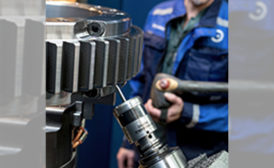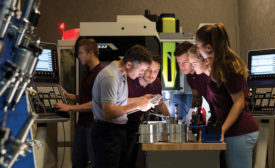Darryl Seland
Darryl Seland is Editor-in-Chief of Quality magazine. He can be reached at [email protected].
ARTICLES
Why Yesterday’s Data Collection Systems Don’t Support Overall Equipment Effectiveness
Increasing the pace, capacity, and precision of measurement and inspection data collection is the first step in OEE.
June 11, 2021
How Process Control Saves Time and Money
Adding automation to manufacturing process control systems enables a holistic factory view.
June 10, 2021
How Does Process Control Work, Exactly?
Get to know the equipment that drives manufacturing inspection.
June 10, 2021
Why Adopt Risk-Based Thinking?
Automated risk management tools can help manufacturers incorporate risk-based thinking into their processes.
June 3, 2021
Scaling data collection systems to growing operations
Today’s automated data collection systems can help companies boost efficiency, even as their requirements change.
May 6, 2021
The ins and outs of document control
Learn the difference between document control, management, systems and software.
May 6, 2021
From the Editor | Darryl Seland
Truth or Fallacy
Depends on how you look at it.
April 8, 2021
New Data Collection Fundamentals Keep Pace With Industry 4.0
New to wireless data collection? Here’s some helpful terminology to get you in the know.
April 8, 2021
Stay in the know with Quality’s comprehensive coverage of
the manufacturing and metrology industries.
eNewsletter | Website | eMagazine
JOIN TODAY!Copyright ©2024. All Rights Reserved BNP Media.
Design, CMS, Hosting & Web Development :: ePublishing








